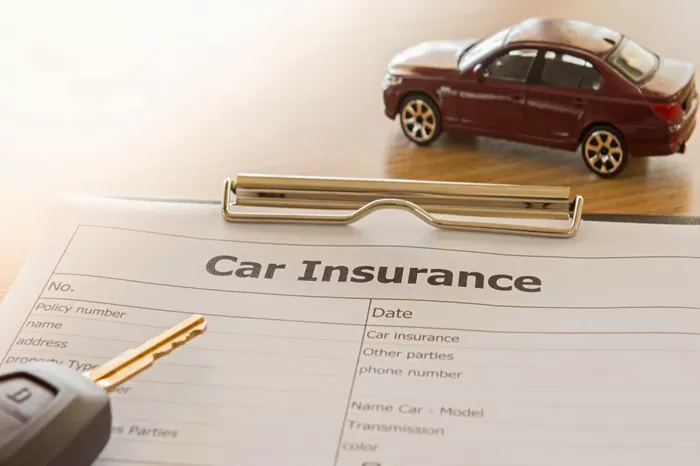Taking an RV on a cross-country adventure in the U.S. is a dream for many travelers. The freedom of the open road, the opportunity to visit national parks, and the joy of camping under the stars make RV travel an exciting experience. However, before setting off, it’s essential to consider RV insurance. American Adventure RV insurance offers protection for RV owners, ensuring peace of mind while traveling. What do you need to know about American Adventure RV insurance? What exactly does this insurance cover, and why is it important?
Why is American Adventure RV Insurance Important?
RV insurance is essential for anyone planning to hit the road in their RV, especially if you’re traveling across multiple states. In the U.S., RVs are treated like vehicles, and just like with any other car or truck, you must have insurance coverage. Without it, you may be responsible for significant out-of-pocket costs if your RV is damaged, stolen, or involved in an accident.
American Adventure RV insurance is designed to protect both the vehicle and its occupants. While RVs are built for travel and adventure, they are also prone to accidents, weather-related damage, and wear and tear from extensive use. Insurance ensures that you are financially protected in case of an incident.
What Does American Adventure RV Insurance Cover?
There are several types of coverage included in most American Adventure RV insurance policies. These coverage options can be tailored to meet the specific needs of RV owners, ensuring that you’re protected in various scenarios.
1. Liability Coverage
Liability coverage is one of the most critical components of any RV insurance policy. It protects you financially if you’re responsible for an accident that causes injury to another person or damage to their property. In most states, liability coverage is a legal requirement, and it’s necessary to drive your RV legally on public roads.
Liability coverage includes:
Bodily Injury Liability: Covers the medical expenses and legal fees if someone is injured in an accident you cause.
Property Damage Liability: Covers the costs of repairing or replacing property that you damage in an accident.
2. Collision Coverage
Collision coverage protects you if your RV is involved in a collision with another vehicle or object. This type of coverage will help pay for the repairs or replacement of your RV, regardless of who was at fault in the accident. Whether you’re driving through a busy city or navigating a narrow mountain road, collision coverage provides important financial protection.
3. Comprehensive Coverage
Comprehensive coverage provides protection against non-collision incidents, such as theft, vandalism, or weather-related damage. If your RV is damaged by a storm, hit by a falling tree, or stolen, comprehensive coverage can help cover the costs of repair or replacement.
This coverage also includes damages caused by natural disasters, animal collisions, and fire. Since RV owners often park in remote areas or camp in nature, comprehensive coverage is especially valuable for American Adventure RV travelers.
4. Roadside Assistance
Roadside assistance is a key feature of American Adventure RV insurance, offering help when you need it most. If your RV breaks down while you’re on the road, roadside assistance can provide services like towing, fuel delivery, tire changes, and battery jumps. Given the size and complexity of RVs, breakdowns are common, so having roadside assistance can be a lifesaver when you’re far from a service station.
5. Personal Belongings Coverage
RVs are often equipped with a variety of personal items, including camping gear, electronics, and furniture. Personal belongings coverage protects these items in the event of theft or damage. If a storm damages your RV or someone breaks into it, personal belongings coverage can help you recover the costs of replacing your valuables.
6. Uninsured/Underinsured Motorist Coverage
Uninsured/underinsured motorist coverage protects you if you’re involved in an accident with another driver who either doesn’t have insurance or doesn’t have enough insurance to cover the damage. While this type of coverage is not mandatory in every state, it can be a wise choice for travelers, as not everyone on the road carries sufficient insurance.
7. Vacation Liability Coverage
If you’re renting out your RV or using it for vacation purposes, vacation liability coverage may be an essential addition to your policy. This coverage protects you against accidents or injuries that occur while your RV is being used as a vacation home. This can be especially useful for people who park their RV in campgrounds or RV parks for extended periods.
What Are the Types of RV Insurance Policies Available?
American Adventure RV insurance comes in several different policy types. The most common types of RV insurance policies include:
1. Full-Timer Insurance
Full-timer insurance is for people who live in their RV year-round. This type of policy is similar to homeowner’s insurance and provides comprehensive coverage for your RV as well as your personal belongings inside. If you live in your RV full-time, it’s crucial to have this type of insurance to protect both your vehicle and your home.
2. Part-Time Insurance
Part-time RV insurance is for those who only use their RV occasionally, such as on weekends or during holidays. This type of policy provides coverage when the RV is being used on the road but does not cover it while it is in storage. This is an affordable option for those who don’t use their RV year-round but still want to be protected while driving.
3. Seasonal Insurance
For RV owners who use their vehicles only during specific seasons (like summer or fall), seasonal insurance is an option. Seasonal policies typically cover you for the months when you’re using your RV and reduce your premiums when your RV is in storage during the off-season. This can save you money if you only use your RV for part of the year.
4. Liability-Only Insurance
Liability-only insurance is a less expensive option for RV owners who don’t want to pay for comprehensive coverage. This policy covers only the liability aspects of your RV, meaning it protects you in the event of an accident with another vehicle or property but does not cover damage to your own RV. If your RV is older or not worth much, liability-only insurance may be a viable option.
5. Comprehensive Insurance
Comprehensive insurance provides the most coverage and is ideal for RV owners who want to ensure their vehicle is protected against almost all types of damage. This type of policy covers damage from collisions, theft, vandalism, fire, and natural disasters, as well as personal injury or property damage caused to others.
How Much Does American Adventure RV Insurance Cost?
The cost of American Adventure RV insurance varies based on several factors. These factors can include the value of your RV, the level of coverage you choose, the state in which you live, and your driving history. On average, RV insurance costs between $1,000 and $2,500 per year, but this can vary significantly.
Some factors that may influence the cost of your insurance include:
RV Make and Model: Higher-end RVs or custom-built vehicles may cost more to insure.
Coverage Type: More extensive coverage options, such as comprehensive or full-timer insurance, can increase your premium.
Driving Record: A clean driving record can result in lower premiums, while a history of accidents or traffic violations may increase your rates.
Location: Insurance rates can vary by state, depending on the driving conditions, accident rates, and weather patterns in your area.
To get the best deal on your RV insurance, it’s a good idea to shop around and get quotes from different providers. Many insurance companies offer discounts if you bundle your RV insurance with other policies, like home or auto insurance.
How to Save on RV Insurance
There are several ways you can reduce the cost of your American Adventure RV insurance:
Increase Your Deductible: Opting for a higher deductible can lower your premium. Just make sure you can afford the out-of-pocket costs if you need to file a claim.
Bundle Your Policies: Many insurance providers offer discounts if you bundle your RV insurance with other policies, such as car or home insurance.
Take Advantage of Discounts: Ask your insurance provider about available discounts. Some companies offer discounts for things like completing a driving safety course, installing security devices in your RV, or maintaining a good driving record.
Maintain Your RV: Keeping your RV in good condition and regularly maintaining it can help reduce your insurance costs. Some providers offer lower rates for well-maintained vehicles.
How to Choose the Right RV Insurance Provider
Choosing the right RV insurance provider is crucial for ensuring that you have the best coverage at the most affordable price. Here are some tips to help you choose the right provider:
Get Multiple Quotes: Obtain quotes from at least three different providers to compare rates and coverage options.
Research Customer Reviews: Look for reviews and testimonials from other RV owners to learn about the provider’s customer service and claims process.
Understand the Coverage Options: Make sure you fully understand what is covered by your policy and what isn’t. Some providers may offer optional add-ons, like roadside assistance or personal belongings coverage, that can be worth the extra cost.
Check the Provider’s Financial Stability: Choose an insurer with a strong financial rating, so you can be sure they will be able to pay out claims if necessary.
Conclusion
American Adventure RV insurance is essential for anyone planning to travel in their RV, whether full-time or part-time. It provides financial protection in the event of an accident, theft, or damage, ensuring that you can enjoy your road trips without worry. By understanding what RV insurance covers, how much it costs, and how to save on premiums, you can make sure your RV is adequately protected for your next adventure on the open road.
Related topic:
Is Insurance Essential for Full-Time RV Living?






















